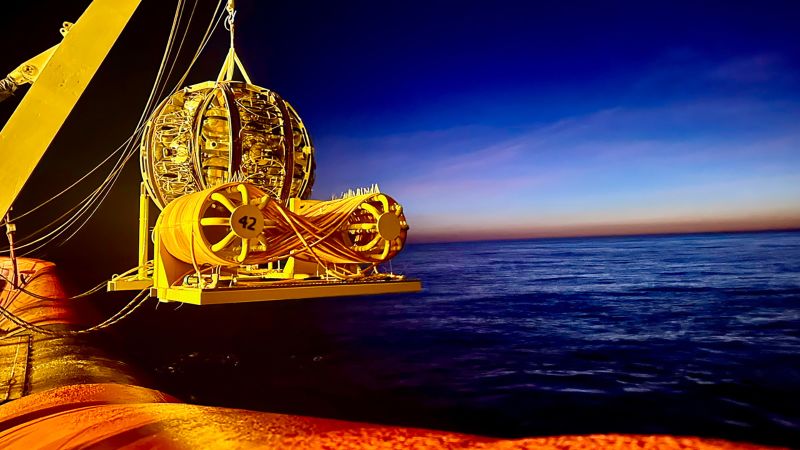In a groundbreaking discovery, astrophysicists have reported the detection of the highest-energy cosmic neutrino, a particle that possesses an astonishing energy level of 220 million billion electron volts. This unprecedented finding was made possible by the KM3NeT Collaboration, which consists of more than 360 scientists from multiple countries working on a sophisticated network of sensors currently under construction at the bottom of the Mediterranean Sea. The details were published recently in the prestigious journal “Nature.”
Known formally as neutrinos, these particles are often described as “ghostly” due to their extremely low mass and their ability to pass through any matter without interacting. Their elusive nature means they can travel vast distances across the universe, originating from extreme environments like black holes, supernova remnants, and possibly gamma-ray bursts. According to Dr. Brad K. Gibson, one of the study’s coauthors, the energy contained in this single neutrino is equivalent to that released by splitting one billion uranium atoms. Such immense energy crafted in a seemingly ethereal particle makes neutrinos invaluable messengers of cosmic phenomena.
Named KM3-230213A, the recorded neutrino is about 30 times more energetic than previously detected neutrinos, marking it a significant benchmark in the field of neutrino astronomy. The detection occurred on February 13, 2023, during operations involving the ARCA (Astroparticle Research with Cosmics in the Abyss) detector, which operates at a depth of 11,319 feet (3,450 meters). This detector, one component of the KM3NeT collaboration, was able to capture the signals from the neutrino even though it was operational with only 10% of its planned sensors.
The collaboration aims to shed light on high-energy neutrinos, which could unveil secrets about the universe’s most violent events. Co-spokesperson Paschal Coyle emphasized that this discovery opens a new observational avenue in astrophysics, allowing scientists to explore the extreme astrophysical phenomena that generate such potent particles. He further added that KM3NeT is poised to probe new ranges of energy, offering vast potential for discoveries concerning the origin of cosmic rays and other celestial mysteries.
However, the specific origins of this record-breaking neutrino remain a mystery. Researchers have speculated that it could have originated from deep space, potentially traveling from beyond the Milky Way galaxy. Various astrophysical events, such as supermassive black holes or gamma-ray bursts, have been proposed as possible sources. The study authors identified 12 potential blazars—extremely luminous active galaxies—that could be connected to this unique cosmic messenger, correlating the neutrino’s trajectory with established astronomical data.
Neutrinos are inherently challenging to detect due to their weak interactions with matter, but they produce detectable light when they do interact, such as when they collide with ice or water. The IceCube Neutrino Observatory, located in Antarctica, has also been successful in detecting and tracing neutrinos back to their cosmic sources, including blazars.
The KM3NeT project, a vision that began in the early 2010s, has not only demonstrated remarkable breakthrough capabilities in detecting neutrinos but also continues to evolve. As the construction of its expansive sensor network progresses, the scientific community eagerly anticipates further insights into high-energy astrophysical events that generate these enigmatic particles. By integrating cross-referenced cosmic data across various wavelengths, researchers hope to unveil the elusive origins of cosmic rays and their associated neutrinos.
Ultimately, the implications of this discovery extend beyond neutrino physics; they venture into the broader understanding of cosmic energy sources. With this singular yet powerful neutrino acting as a showcase of cosmic force, scientists are hopeful that detailed investigations may soon provide answers to some of the universe’s most profound questions. Although much research remains to be conducted, many experts see this detection as an extraordinary milestone for neutrino astronomy, setting the stage for future explorations into the cosmos.



